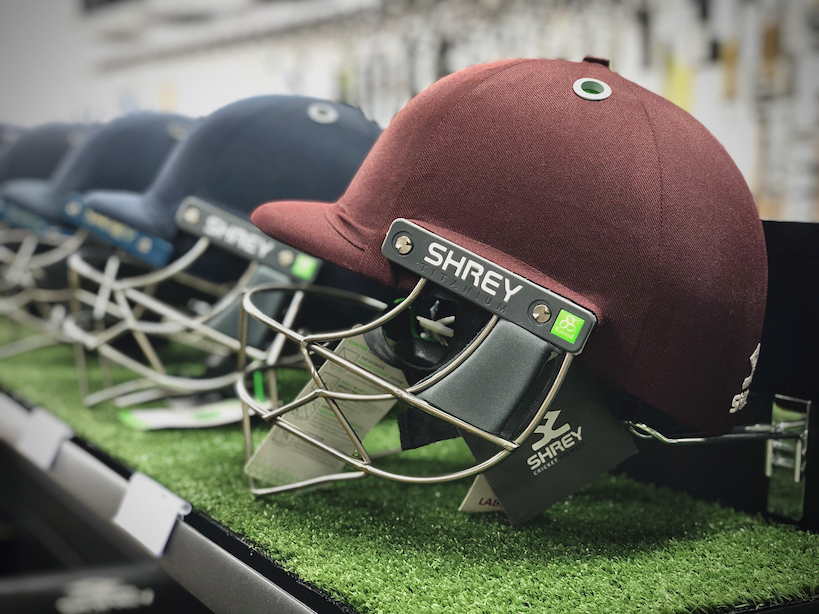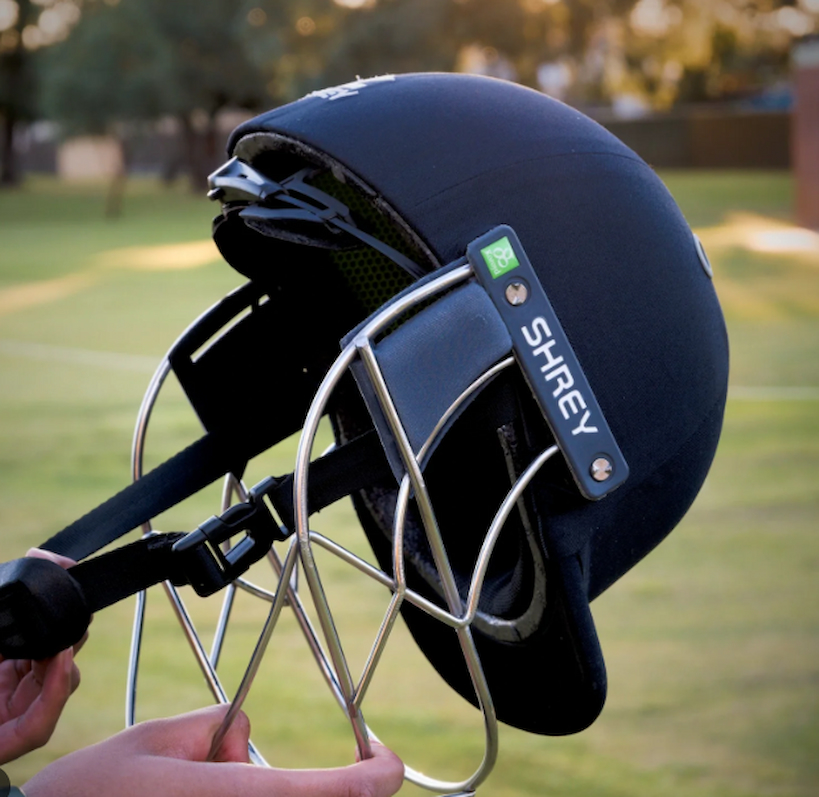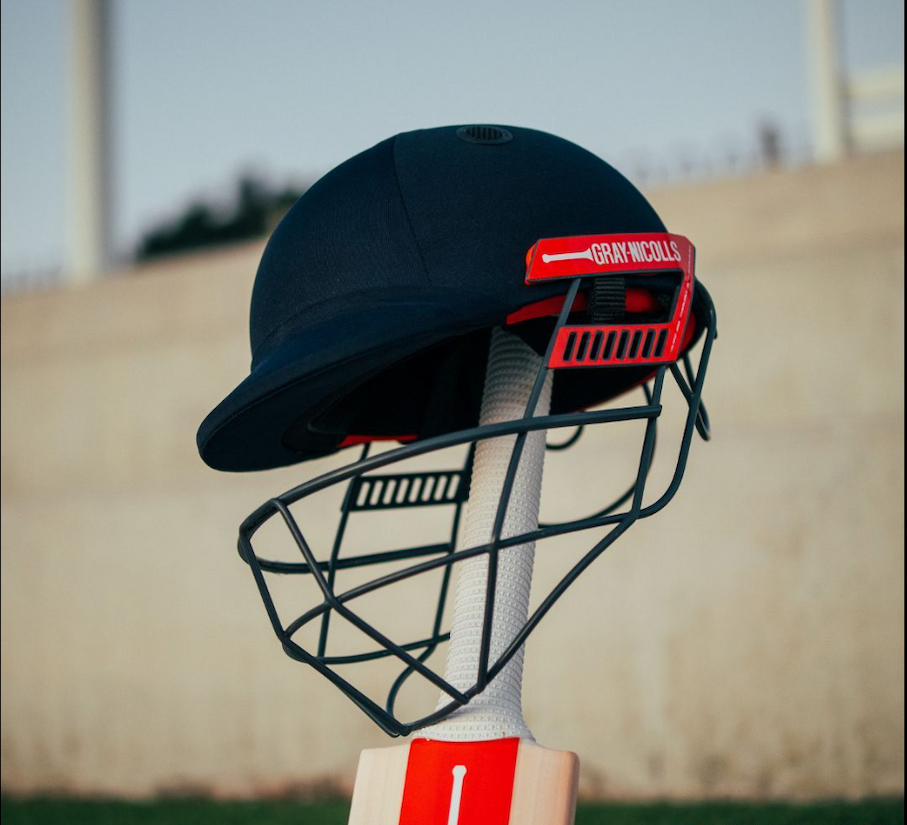How to Choose the Right Helmet for Cricket
When it comes to cricket, one could argue that the helmet is the batter’s second most essential piece of equipment (the bat being the first, of course). If you ask most batters, they’ll tell you that a quality helmet is even more important than a good bat. That’s because when you bat, you don’t even see your cricket bat at times; But the helmet is what you actively look through when batting, and is the sole piece of equipment that protects your face and brain.
The Importance of the Cricket Helmet

What purpose does a quality helmet for cricket serve, then? First and foremost, it’s the most critical piece to safeguard the player’s face, or brain, which serves as their decision-making tool. If it’s somehow compromised, there may be immediate discomfort as well as long-term issues with effective decision-making and general brain health.
Second, the batter must have excellent vision in addition to unwavering protection so that he may see the ball unhindered. This is only possible if the cricket helmet is selected with the proper fit. If the helmet is too loose, it will move around while being worn, which will impede eyesight. Additionally, impacts from balls may cause more harm because the loose fitting will allow room to enter the helmet, which will contact the head and provide jarring sounds.
Too tight, and it can cause headaches because of the constriction, and the grille ends up at eye level instead of peering through the gap, compromising eyesight once more. Sometimes the head barely fits inside, leaving the back of the skull and the jaw exposed.
It can be difficult to choose a cricket helmet, but here are some guidelines to help you make the right choice.
How to Make the Right Choice
Standards to Be Aware Of
Since the tragic Phil Hughes incident, helmet standards in Australia have been revised and levels of protection have significantly risen. The code “BS 7928:2013” has remained the same, however, all respectable cricket helmet brands these days will have some language stating “Meets the latest ICC / BS 7928:2013 standard” or something like that. This indicates that the helmet type has also undergone testing following the most recent British safety standards and has been found to meet them.
What kind of helmet is British Standard? The British Standard was updated and selected as the de facto international standard for helmet safety as a result of the ICC’s collaboration with British sports protection professionals to improve helmet safety. The British Standard raises the bar for overall helmet safety and has the following main advantages:
- an improved projectile-facial contact test that evaluates whether the ball passes through the faceguard and makes contact with the face after that
- separate testing for junior balls and men’s sizes
- extra inspections aimed at enhancing safeguarding the temporal (side) region of the head and the occipital (rear) portion of the head
Fitting

As previously said, how the helmet for cricket fits you is crucial because an improperly fitting piece can be harmful. Thus, these are the things to take into account when selecting a decent fit:
- Use the size guides provided by the manufacturer
- Consider your head shape, as manufacturers have varying shaped helmets (Masuri is more oval, Shrey is more round).
- The helmet should fit snugly just above your eyebrows, with the top of your head touching the lid.
- Without having to move your head or eyes, you should be able to look through the grille while standing in your typical position.
- The helmet should move in unison with your head movements, reacting as though it were an integral part of your head.
The Cost
When it comes to helmets, it’s important to remember that the more expensive they are, the better the protection and comfort. But more importantly, if the helmet satisfies the “BS 7928:2013 standard,” it is deemed safe enough to be used at any level.
Therefore, you don’t necessarily need to spend more money to meet the standard protection; instead, you should think about the level of cricket you play and whether you need to spend $350 or $110 on a helmet to feel secure in any scenario.
Weight: Steel vs. Titanium
The final factor is weight. The majority of helmets have similar weights, making weight differences barely perceptible; however, the largest weight variation is found between steel and titanium grille helmets. Since titanium grille cricket helmets are often 100–150 grams lighter than their still grill equivalents, you’ll find that practically all professionals wear them. Titanium grille cricket helmets are typically at the top of the helmet spectrum.
For the average cricket player, it won’t make much of a difference, but if you’re a more picky batter who truly feels the difference and is willing to spend more than the titanium grilled cricket helmets, then the lighter option could be ideal because the margins are thinner in top-level cricket.
To Sum Up
With any luck, this guide will help you choose the ideal helmet the next time you buy in person or online by providing a little more clarity. You want to be the best version of yourself on game day, and at the end of the day, you shouldn’t feel like you’re wearing any gear at all when you walk out to the crease!



